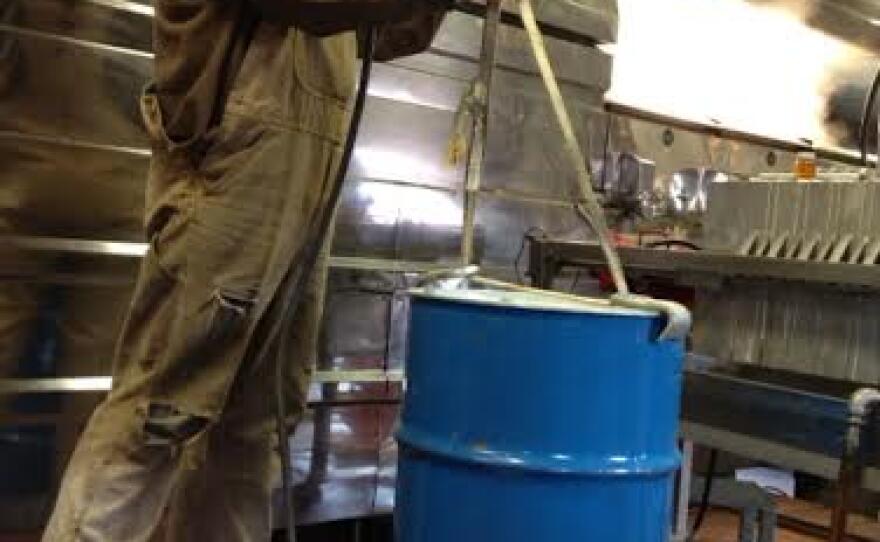Maple syrup production in northern Wisconsin is wrapping up for the season. For small producers a fickle weather pattern meant it wasn’t a great season in terms of syrup quantity. But for larger producers who use more high-tech systems, it was still an above average year. And the reasons behind these sap dynamics are still somewhat of a mystery.
The day I visit Maple Hollow Farm near Merrill Wisconsin is muddy and cool – a typical backdrop for a process that takes place only in spring, when the sap is running.
“My dad always said that no food is so good that maple syrup won’t improve it, and I happen to agree with him.”
Joe Polak is showing me around the land that his grandfather purchased more than a hundred years ago, intending to start a sawmill. But he found the maple trees were too low quality to make good lumber. Instead he started tapping them to make syrup.
“In the old days, when I was a lot younger, we would hang buckets on all these trees, and at one time we had as many as 6200 pails," Polak explained. "And it took a small army to get around the forest – we tried to collect them every other day. ”
Now Maple Hollow relies on a network of tubing to collect the sap and channel it back to the syrup house. Another set of tubes provides vacuum suction that helps draw out the sap from almost 10,000 taps.
Doing it this way takes a lot less manpower, and it also increases production. Using the bucket method, a single tree might yield up to a quart of finished syrup throughout the season. With vacuum, the amount goes up to a third of a gallon.
“Used to be 10 years ago we used a little bit of vacuum tubing and thought we were doing something really innovative, and at the time it was," said Polak. "Well today, we’re talking high vacuum, which means 22-26 inches of vacuum at the tree."
Another technology that once revolutionized syrup production is a process called reverse osmosis. It uses pressure to remove three quarters of the water content from the sap, making it a lot easier and faster to boil down the sugary liquid.
In the syrup house, a sweet smelling steam pours out of a shiny steel evaporator the size of a small car. Maple Hollow relies on an old-fashioned wood fire to fuel the evaporator. Every twenty minutes, a crew of workers builds up the blazing fire beneath it. They go through several cords of wood in a single day of running the evaporator.
The end product streaming out of the finishing pan looks like caramel colored water, not thick syrup.
Tammy, who’s helping out in the syrup house, explained that's because it's so hot - almost 217 degrees. She gave me a taste the hot fresh syrup, which I sipped from a Dixie cup. Maple Hollow sells several different grades of syrup that vary in taste. And despite all the technology I was seeing, Joe Polak explained there are some steps you can’t cut out…or it wouldn’t be maple syrup.
“You still have to do the boiling," he said. "You still have to put heat to it to get the flavor and the color.”
That’s not the only thing that keeps syrup producers humble. The fact is, maple syrup is still an agricultural product that relies on the twists and turns of Mother Nature. Producers hope for an elusive combination of warm days and freezing nights without wind.
“Usually the sap doesn’t run in the trees when you have wind," Polak explained. "There’s some theories as to why that is the case, but we don’t know for sure.”
Another mystery? After a few days of that ideal weather, it actually helps to have a weather change, like a storm coming in. Polak says that helps the sap start flowing again, but it’s not really clear why it works that way.
“I’m not sure. I don’t think anybody knows for sure," he said. "But that’s the way it works. There’s a lot of things in this industry that we don’t understand. There’s scientists working on it all the time, but...how the tree works and why it does what it does.”
Whatever it was that the trees did this year has producers like Maple Hollow rejoicing in thousands of gallons of delicious maple syrup.











